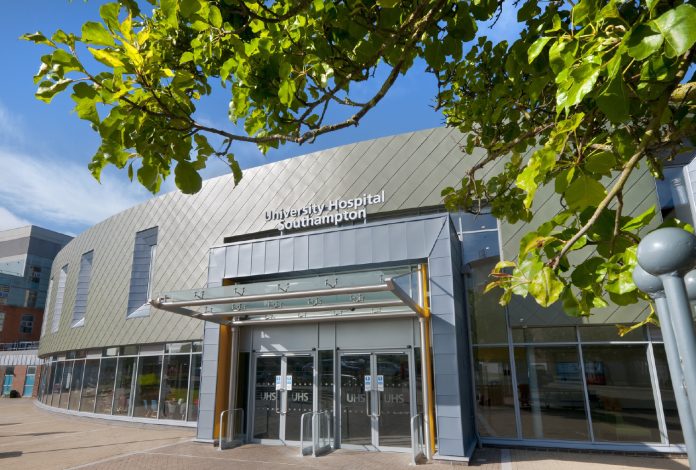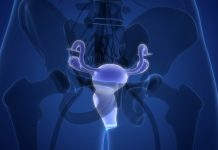University Hospital Southampton is implementing Aiforia’s PD-L1 lung cancer AI solution to assess PD-L1 staining in lung cancer specimens. Dr Vipul Foria and Dr Victoria Elliot describe their journey so far
Implementing Artificial intelligence (AI) is the final step in a larger three-year project to digitise Southampton’s entire diagnostic pathology workflow. “The AI tools are the icing on the cake. We very much recognise that whilst digitisation brings with it certain efficiencies, one of the major steps forward in terms of clinical provision and coping with demand is to implement AI and see benefits for our consultants and obviously for our patients,” as Dr Victoria Elliot, FRCPath, Consultant Histopathologist, at University Hospital Southampton NHS Foundation Trust, describes.
The project to implement AI started as part of the PathLAKE consortium and was funded through Innovate UK. Aiforia was selected as one of the AI providers, and Southampton chose the Aiforia® Lung Cancer PD-L1 AI solution as it met the required criteria, such as being CE-IVD certified for diagnostic use and being deployed to other health centres in Europe.
“Southampton is one of the largest centres in the UK for performing PD-L1 testing in-house. So, we were looking for a tool for this particular workstream to make our processes more efficient,” as Dr Vipul Foria, DipRCPath(Cyt) FRCPath, Consultant Histopathologist & Cytopathologist, at University Hospital Southampton NHS Foundation Trust, explains.
AI as a helpful assistant
important but repetitive and time- consuming tasks. “PD-L1 and several other biomarkers are potentially really time-consuming for pathologists to undertake in an analogue fashion, and that is what we’re used to at the moment.”
“We’re all very busy, and the demand and capacity issue is ongoing and is probably going to get worse. So, there is inevitably a place for AI. We hope it will save time and make things less arduous. Ultimately, we hope that those efficiencies will be handed on to the clinical service, meaning that we can turn reports and test results around for patients faster, so they can get the treatment they require as soon as possible,” said Dr Victoria Elliot.
Dr Elliot explains that it’s important to slowly build confidence in new technologies. “What is quite appealing about these sorts of tools is that they have a human in the loop, where the human is still going to verify the results. In some ways, the AI is your helpful assistant.”
Southampton currently has four lung pathologists who will be the main users of the AI solution. They also have a large training centre where trainee pathologists can utilise the solution to create an initial report, which will be reviewed and finalised by the consulting pathologists.
Aiming to be a strong AI centre, the team acknowledges that there is much more potential beyond PD-L1 in the future. They also have access to Aiforia® Create, which they are excited to start using to develop their AI models for image analysis in digital pathology.
Challenges in being a trailblazer
When asked about challenges, Dr Foria and Dr Elliot agree that the biggest ones relate to governance and overcoming doubts, for example, about the safety of patient data. The University Hospital already uses AI for research purposes, but using it in the diagnostic setting is a groundbreaking change.
While the NHS is a large blanket covering multiple hospitals, each still has its unique IT infrastructure and processes, meaning each hospital has to start from scratch, as no unifying guidance has been created. Dr Foria also highlights that funding never keeps up with the demand, and implementing new technologies should not be conducted as one-off projects. Instead, there should be continuous support and understanding that radical changes like these take time.
Despite the challenges, the Southampton team has been happy about the collaboration with Aiforia. “It has been fantastic. There are always lots of people on the call who are just waiting to get on with the work. They’ve never lost patience with us. Everyone’s always incredibly positive, polite, and very communicative. We’ve been hugely impressed,” Dr Elliot describes.
Pathology of the future
Pathology is undergoing a fundamental change. “Very little technological progress has occurred since the advent of the optical microscope. That has now changed,” Dr Foria describes. Pathologists are no longer bound to the microscopes, and the freedom associated with digital pathology opens up doors for more flexible schedules and working locations, drawing new people to the profession.
“We’ll see quite a different crowd being drawn to this speciality because of the ways of working being so changed from how they’ve historically been,” Dr Elliot estimates. “We will hopefully see much improved recruitment and retention, allowing highly skilled senior pathologists, who would otherwise have retired, to carry on working in a manner that better reflects the work-life balance they want.”
“This is a game-changer for what we can do to ensure that our new pathologists are as well equipped to deal with the pathology of the future,” said Dr Victoria Elliot.
In addition to working styles becoming more flexible and global, Dr Foria and Dr Elliot estimate that AI will change the way we look at pathology, interpret tests, conduct reporting, and arrive at a diagnosis. “This is just the beginning. How we look at molecular data and classify tumours will change because we’ll have all this additional data that we don’t know about yet. With that, patient management and newer therapies will change for the better,” Dr Foria explains.
“This will bring pathology out of the back rooms – we have always been in the background, but we will become more visible now because of the ease with which we can see and share images and discuss with clinicians and other health professionals,” said Dr Vipul Foria.
Learn more about Aiforia’s AI solutions for diagnostic workflows at: aiforia.com/aiforia-clinical-solutions

This work is licensed under Creative Commons Attribution-NonCommercial-NoDerivatives 4.0 International.











